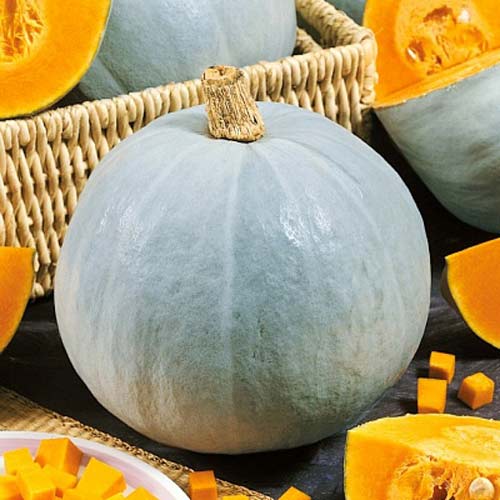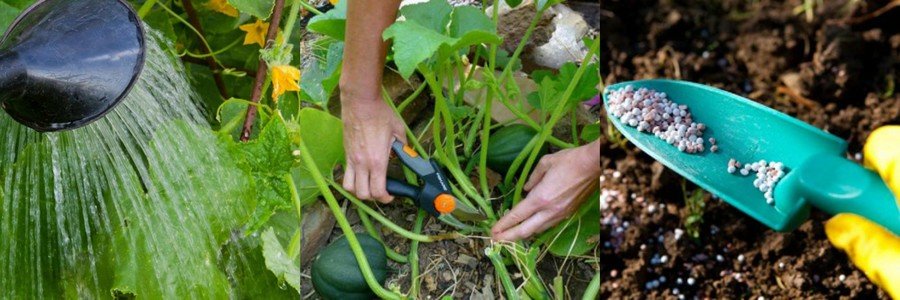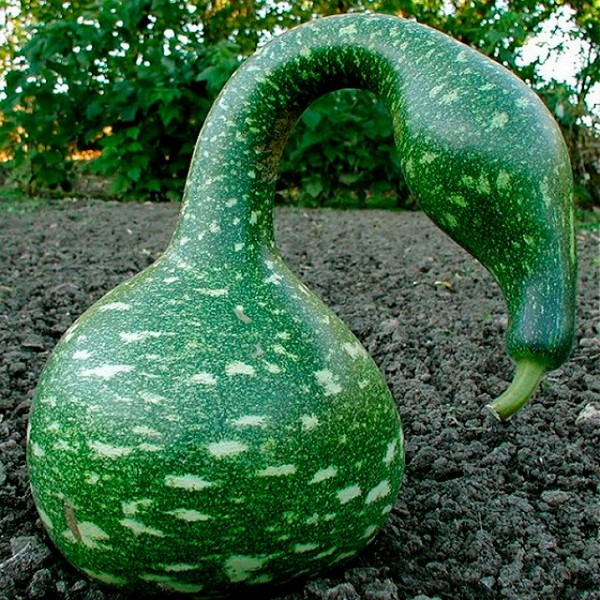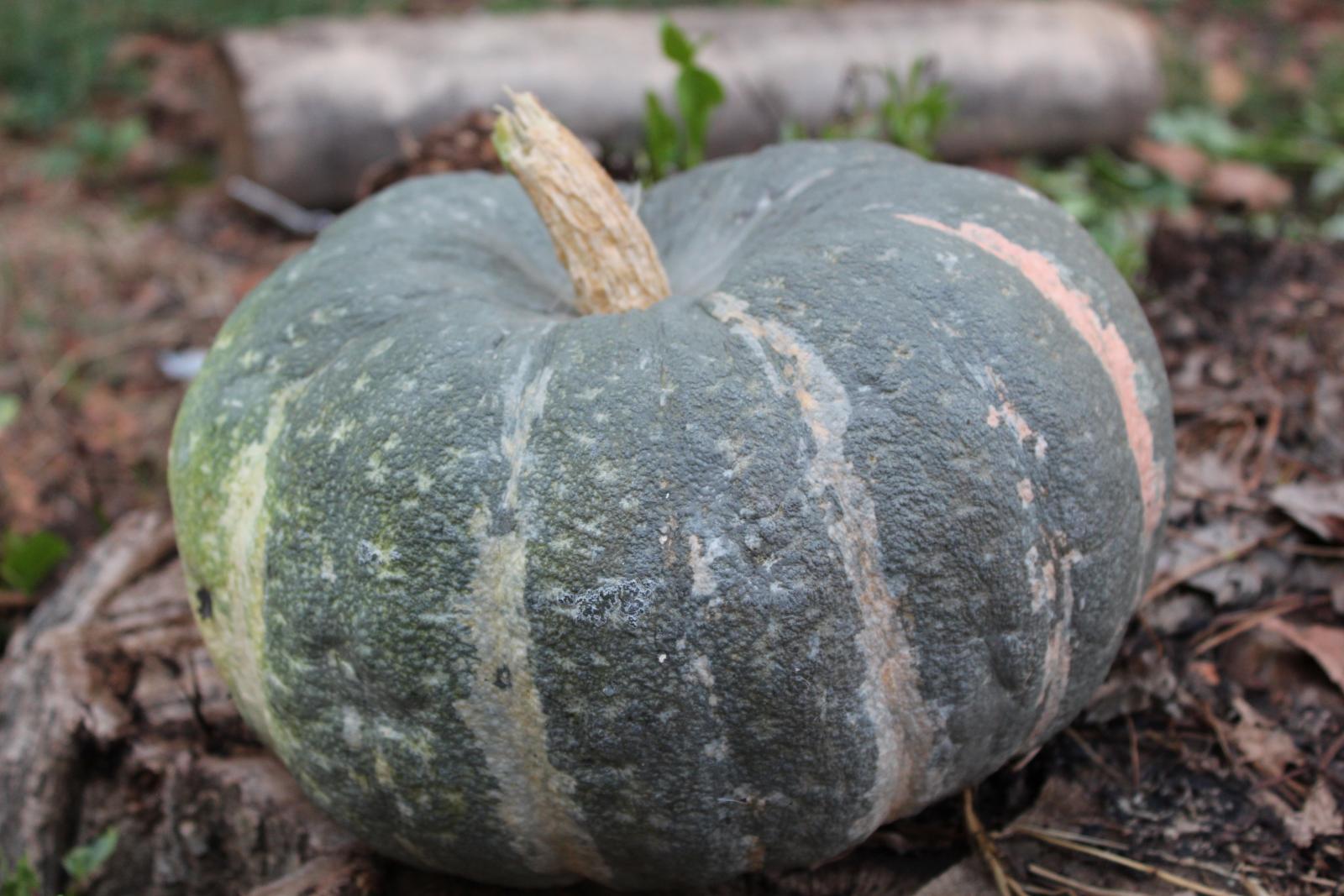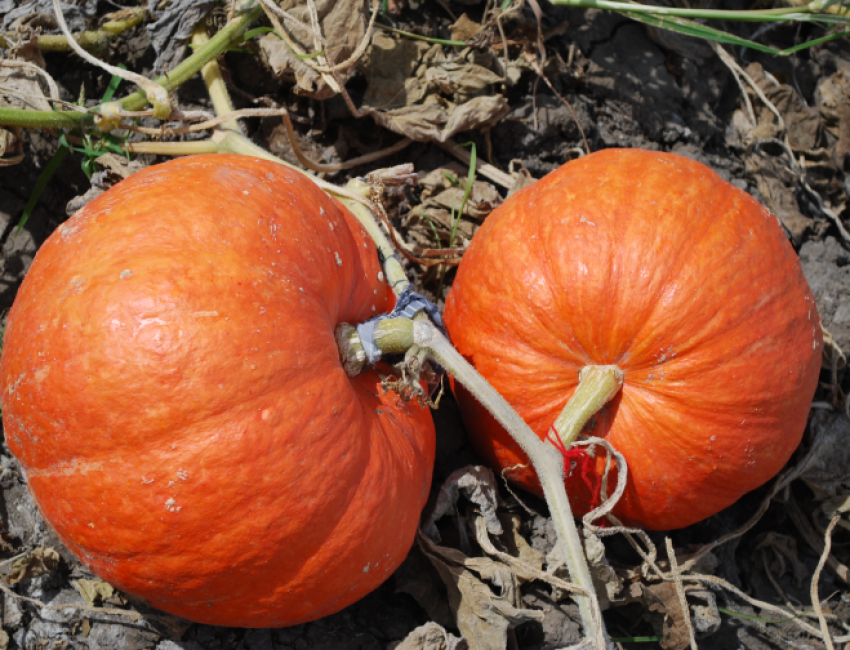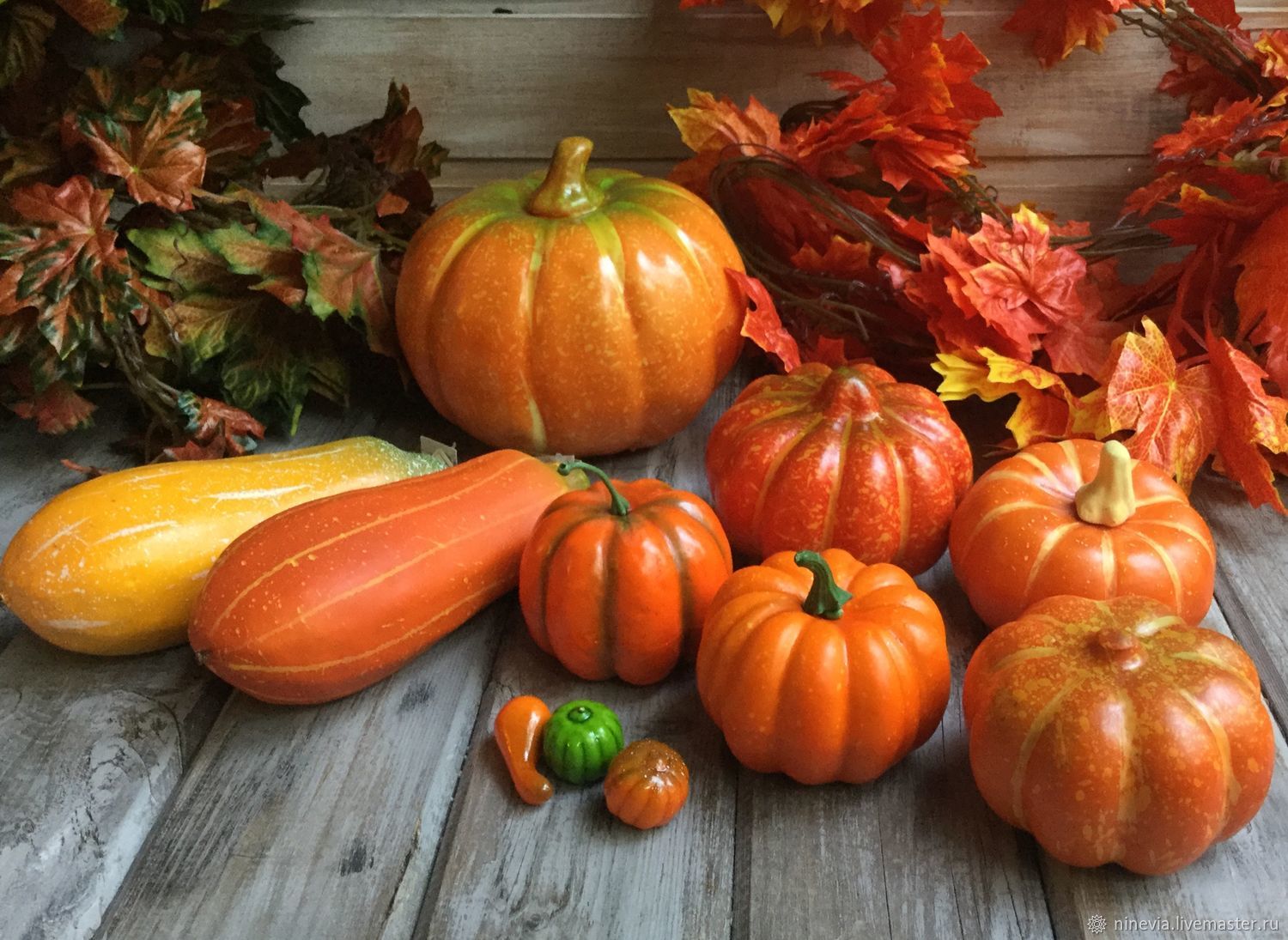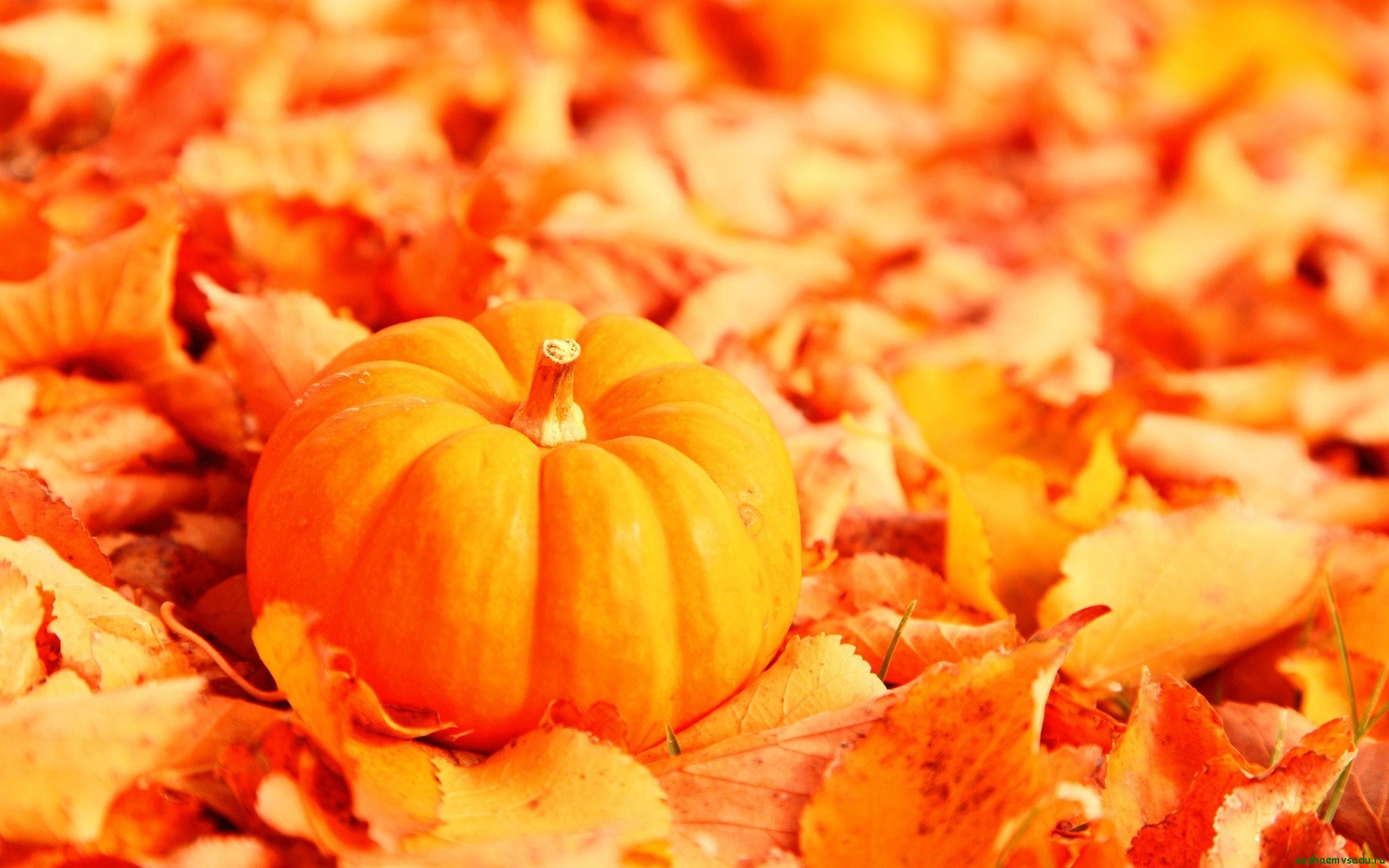Content:
Growing pumpkin in summer cottages, they usually give preference to varieties and hybrids with portion-sized fruits: a small pumpkin can be eaten or processed at a time, while large specimens have to be cut, after which they are stored poorly and not for long. One of these pumpkins with medium-sized and very sweet fruits is the well-known variety Kroshka.
Pumpkin Kroshka was bred in the early 2000s at the All-Russian Research Institute of Irrigated Vegetable and Melon Growing, which is located in Astrakhan. Despite the fact that the variety is recommended for cultivation in the Lower Volga region, it can bear fruit well in a Siberian garden.
Description of pumpkin variety Kroshka
Cold resistance. Due to its high cold resistance, Kroshka pumpkin can be grown even in regions with an unfavorable cold climate, for example, in the Leningrad region.
Plant parameters. The crumb belongs to the climbing types of pumpkin. The main lash is long, its growth must be limited. Growth vigor is average. Kidney-shaped leaves are large, green.
Ripening terms. In terms of ripening, Kroshka is a mid-season. This pumpkin is harvested several weeks later than early ripening. From the moment the sprouts appear to harvest the fruits, 115-125 days pass.
Fruit characteristics. Pumpkins are considered portioned, since their weight reaches 2.5-3 kg. They are covered with woody light gray (sometimes almost white) bark with barely noticeable pinkish spots. Pumpkin shape is flat, round. Dense bright orange pulp is not fibrous, characterized by a sweet taste, sugar content. Fruits are perfectly stored indoors.
Disease resistance. Pumpkin Crumb is resistant to anthracnose (copperhead) - a fungal disease, the symptoms of which are yellow-brown spots that affect the entire aerial part of the culture.
In terms of its varietal characteristics, the crumb is close to several other varieties of large-fruited pumpkin, which have good cold resistance and have an average ripening period. For comparison, below are brief descriptions of similar varieties.
- Pumpkin Honey Crumb. Very often, manufacturers of planting material call the usual Crumb Honey. Despite the fact that the fruits of this variety have similar characteristics (weight, color, taste), Honey Crumb belongs to bush pumpkins, and Crumb belongs to climbing pumpkins.
- Pumpkin Orange Honey. Just like Kroshka, it belongs to the climbing type. The taste, shape, weight and size of Orange Honey fruits are also similar to Crumb's pumpkins. Only the color of the peel is completely different - bright yellow-orange with greenish-yellow stripes.
Orange Honey, Honey Crumb are characterized by a special sweetness of the pulp, a high content of carotene and sugars in ripe pumpkins.
Agricultural technology of cultivation
The cultivation technique on the site of the Kroshka variety is not much different from planting and caring for other varieties of climbing pumpkin and is considered traditional.
Sowing
The crumb can be planted directly into the ground, or you can plant its seeds for seedlings. In the latter case, the fruiting of the pumpkin will begin earlier. Sowing seeds in the ground is carried out only when the soil is sufficiently heated and usually falls on the end of May - beginning of June, depending on weather conditions.
Planting seedlings in open ground is carried out in the same period. To grow seedlings indoors, it is necessary to sow seeds in cups 4-5 weeks before planting: the optimal age of seedlings is 25-30 days. The seeds must be soaked for half an hour in a weak solution of potassium permanganate and kept in a warm, damp cloth for 24 hours.
Seat preparation
Like all other pumpkins, Crumb prefers sunny, windless areas and fertile soil. It is recommended to form the beds in the fall: humus, compost, etc. are introduced into them.
Before planting in the ground, you need to add mineral fertilizers and spill. When the earth settles, you can start planting.
Landing
The recommended scheme for planting a pumpkin Crumb is 60 × 60 cm. The depth of seeding in open ground is about 4 cm. Seedlings are planted so that the surface of the earthen coma is level with the surface of the soil. Therefore, after spilling the holes, you need to wait until the earth settles. Otherwise, the planting material will be buried.
If planting seedlings is envisaged, after planting, it is necessary to cover the seedlings with plastic bottles as a temporary shelter. They are removed after 4-5 days, when the plants adapt to new conditions.
Care
After planting, Tiny needs care. The variety is quite unpretentious, but to get a rich harvest, you must follow some rules.
Watering and mulching. Pumpkin Tiny is very demanding for watering. With an insufficient amount of water, its yield is significantly reduced. Therefore, it is important to ensure that warm water is supplied at least once a week in sufficient volume to the root of the plant. So that water does not evaporate from the ground too quickly, immediately after planting seedlings (or germination / thinning of sprouts) it is mulched with straw, dry hay, sawdust, etc.
Formation. Since Crumb is a representative of the climbing variety of pumpkin, special attention should be paid to the formation of the main stems when leaving. Their number depends on the goals pursued by the gardener himself:
- to grow the largest fruits, you need to leave one main stem, and remove the remaining shoots and stepsons. Limit the growth of the main lash by pinching, counting 4-7 sheets from the extreme fruit;
- when growing Crumbs in 2 and 3 stems leave one or two of the strongest lateral processes, all the rest are removed. The main stem is pinched after the third fruit, leaving 4 leaves after it, and the side ones after the first pumpkin, leaving 5 leaves.
Thus, after correct pinching, no more than five pumpkins develop on each plant. All excess flowers and ovaries must be removed in a timely manner. If necessary, the foliage can also be thinned so that the fruits receive sufficient sunlight.
Usually pumpkin shaping is carried out without using equipment.
To make the plant more powerful, the lashes can be sprinkled with earth at a distance of about 1 m from the root zone. In these places, the stems will give additional roots.
Top dressing. The crumb responds well to organic feeding - mullein and slurry diluted in water, but they can be used only during the period of active growth of lashes and leaves. When the pumpkins begin to tie, you need to switch to potassium and phosphorus-containing dressings.
For competent planting and minimal care, the pumpkin Kroshka will thank you with a rich harvest of sweet portioned fruits.
Advantages and disadvantages of the Kroshka variety
The advantages of this pumpkin include:
- excellent taste;
- low weight of the fruit, allowing them to be consumed at one time;
- versatility of pumpkin use (pumpkin juice can be squeezed out of the Crumb);
- keeping quality and transportability;
- cold resistance and resistance to temperature extremes;
- reliability of the variety (stable yield).
The disadvantage of the Crumb is its susceptibility to powdery mildew. Having found signs of this fungal disease (white or grayish bloom on leaves and stems), it is necessary to immediately spray the pumpkin with a solution of a fungicide, for example, Topaz. The crumb will not be susceptible to powdery mildew disease if its seeds and seedlings are treated as a prophylaxis with solutions of fungicides.
The Kroshka variety is especially popular among Russian gardeners due to its large number of advantages and ease of care. The sweetness of the fruits of this pumpkin leaves no one indifferent.
